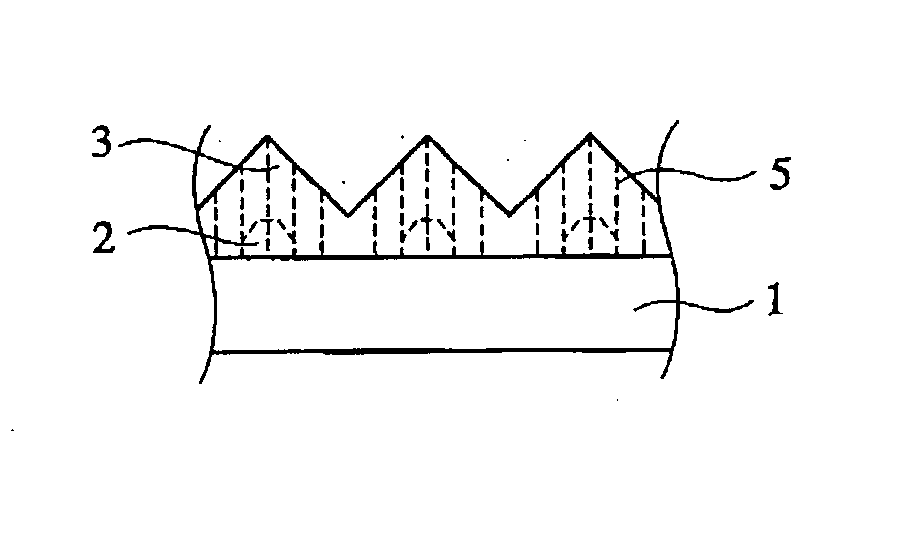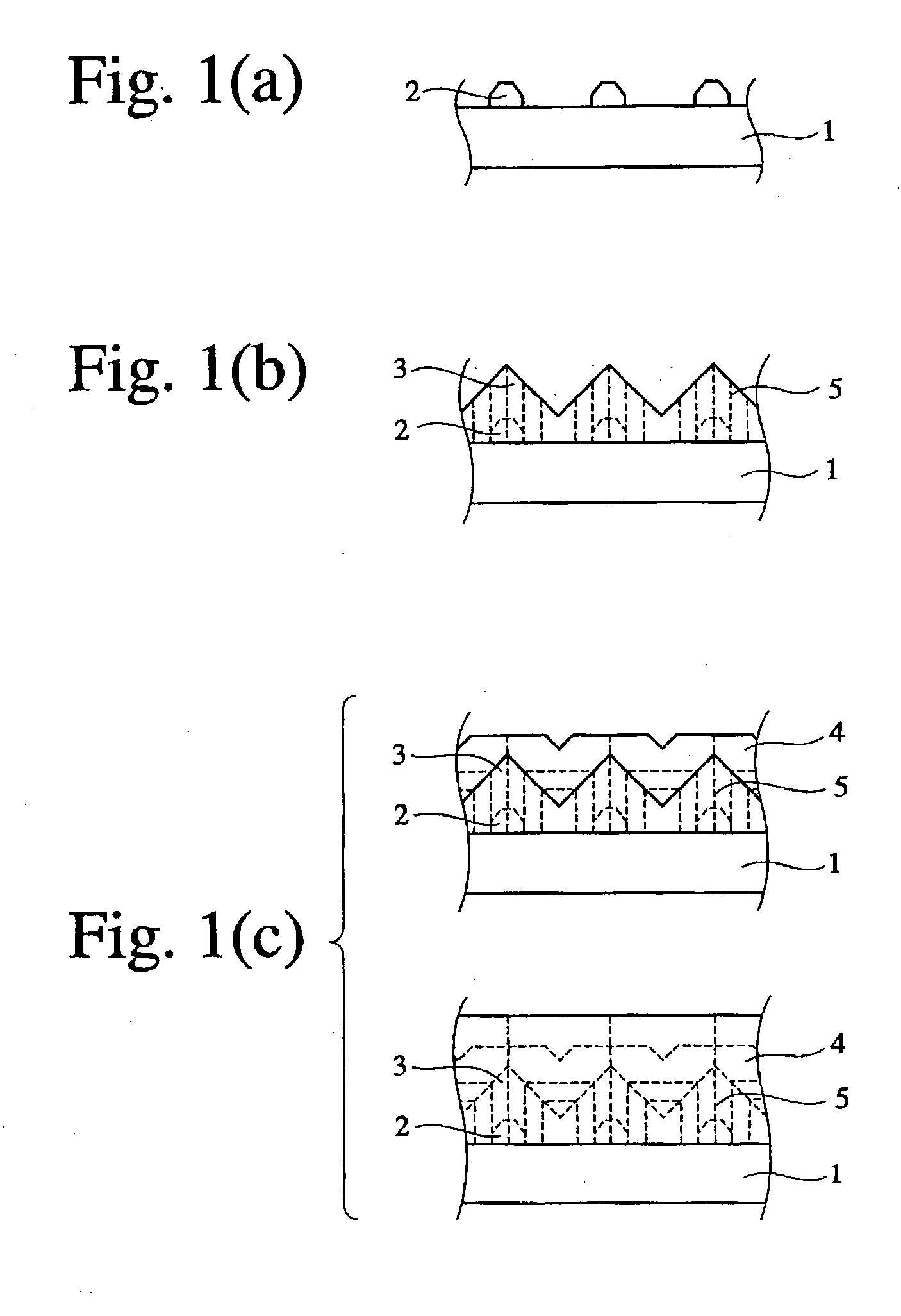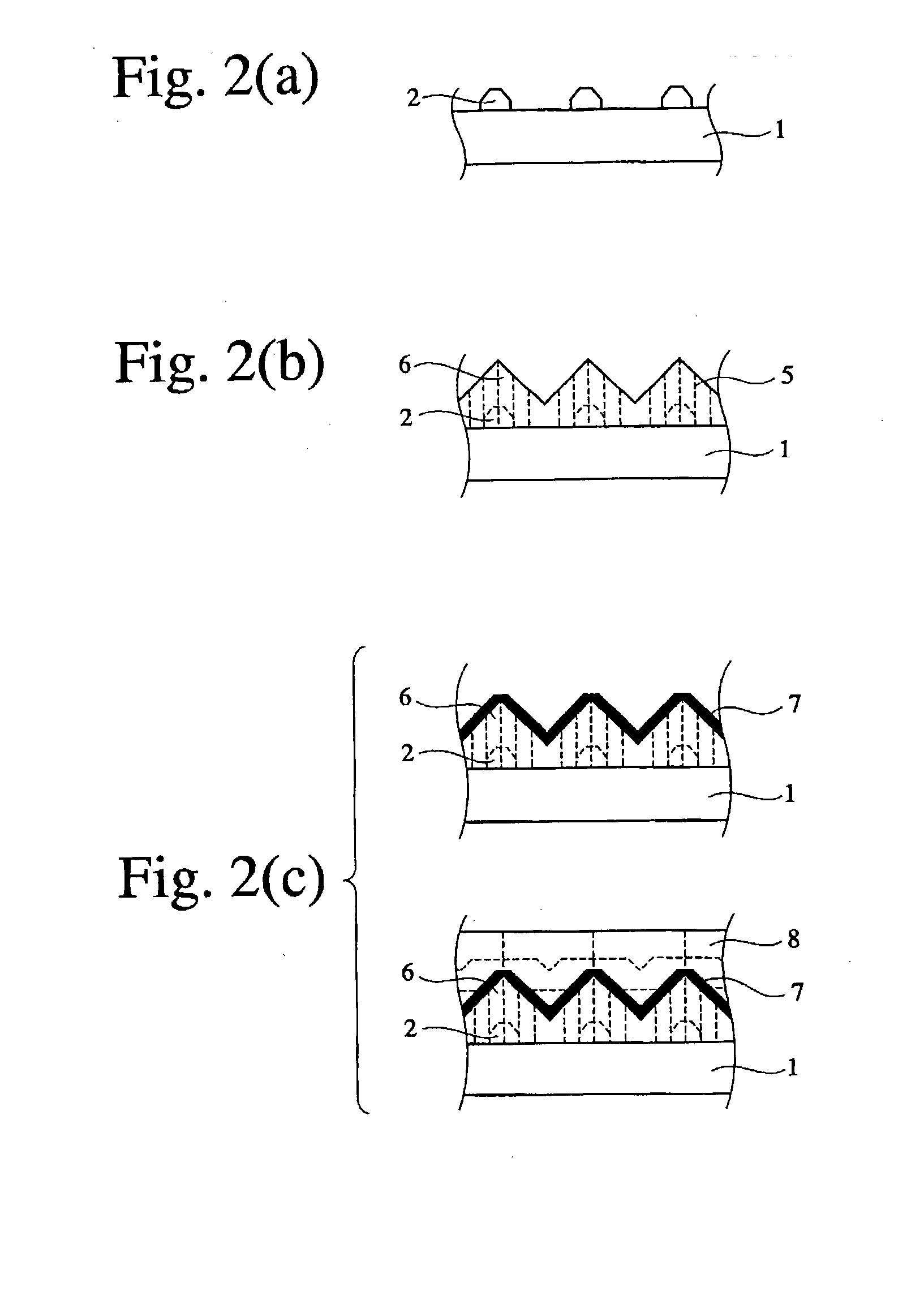Method for producing nitride semiconductor crystal, and nitride semiconductor wafer and nitride semiconductor device
a technology of nitride semiconductor and semiconductor wafer, which is applied in the direction of polycrystalline material growth, crystal growth process, chemically reactive gas, etc., can solve the problems of high cost, high cost, and extremely poor stability of devices using high-dislocation-density semiconductors
- Summary
- Abstract
- Description
- Claims
- Application Information
AI Technical Summary
Benefits of technology
Problems solved by technology
Method used
Image
Examples
example 2
[0078] Investigation was conducted on the relation between a hydrogen concentration in the crystal-growing atmosphere and a dislocation density in the step (b). A nitride semiconductor crystal was caused to grow on the substrate, and the dislocation density on a surface of the resultant nitride semiconductor crystal layer was investigated, in the same manner as in Example 1 except for changing a ratio of an H.sub.2 gas to an N.sub.2 gas in the carrier gas, and setting a crystal-growing temperature Tg.sub.2 at 900 C in the step (b). At this time, with the total flow rate of the carrier gas (80 slm) kept constant, the concentration of an H.sub.2 gas was changed in a range of 0-100%. FIG. 7 is a graph showing the relation between the hydrogen concentration in the atmosphere and a dislocation density. As is clear from FIG. 7, as the hydrogen concentration increased, the dislocation density decreased, and when the hydrogen concentration was 100%, the dislocation density was 5.2.times.10....
example 3
[0079] Investigation was conducted on the relation between the crystal-growing temperature Tg.sub.3 and a dislocation density in the step (c). A nitride semiconductor crystal was caused to grow on the substrate, and the dislocation density on the surface of the resultant nitride semiconductor crystal layer was investigated, in the same manner as in Example 2 except for changing Tg.sub.3, and setting the hydrogen concentration in the crystal-growing atmosphere at 100% in the step (b). FIG. 8 is a graph showing the relation between the crystal-growing temperature Tg.sub.3 and a dislocation density. As is clear from FIG. 8, as the Tg.sub.3 increased, the dislocation density decreased, and the dislocation density was 3.8.times.10.sup.8 cm.sup.-2 at Tg.sub.3 of 1120 C. This appears to be due to the fact that the higher the growing temperature of the nitride semiconductor crystal layer in the step (c), the more the growth in a lateral direction was accelerated, exerting larger effect on c...
example 4
[0080] Investigation was conducted on the relation between the crystal-growing atmosphere pressure in the step (c) and a dislocation density. A nitride semiconductor crystal was caused to grow on the substrate, and the dislocation density on the surface of the resultant nitride semiconductor crystal layer was investigated, in the same manner as in Example 3 except for changing the flow rate of the carrier gas by changing the atmosphere pressure in the growing apparatus, and setting the crystal-growing temperature Tg.sub.3 at 1120 C in the step (c). FIG. 9 is a graph showing the relation between the crystal-growing atmosphere pressure in the step (c) and a dislocation density. As is clear from FIG. 9, the dislocation density decreased with the reduction of an atmosphere pressure, and the dislocation density was 3.times.10.sup.8 cm.sup.-2 at an atmosphere pressure of 76 Torr. It is presumed that the lower the atmosphere pressure in the step (c), the more the growth in a lateral direct...
PUM
| Property | Measurement | Unit |
|---|---|---|
| temperature | aaaaa | aaaaa |
| temperature | aaaaa | aaaaa |
| temperature | aaaaa | aaaaa |
Abstract
Description
Claims
Application Information
 Login to View More
Login to View More - R&D
- Intellectual Property
- Life Sciences
- Materials
- Tech Scout
- Unparalleled Data Quality
- Higher Quality Content
- 60% Fewer Hallucinations
Browse by: Latest US Patents, China's latest patents, Technical Efficacy Thesaurus, Application Domain, Technology Topic, Popular Technical Reports.
© 2025 PatSnap. All rights reserved.Legal|Privacy policy|Modern Slavery Act Transparency Statement|Sitemap|About US| Contact US: help@patsnap.com



